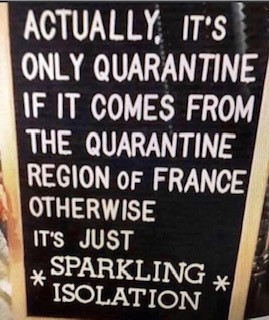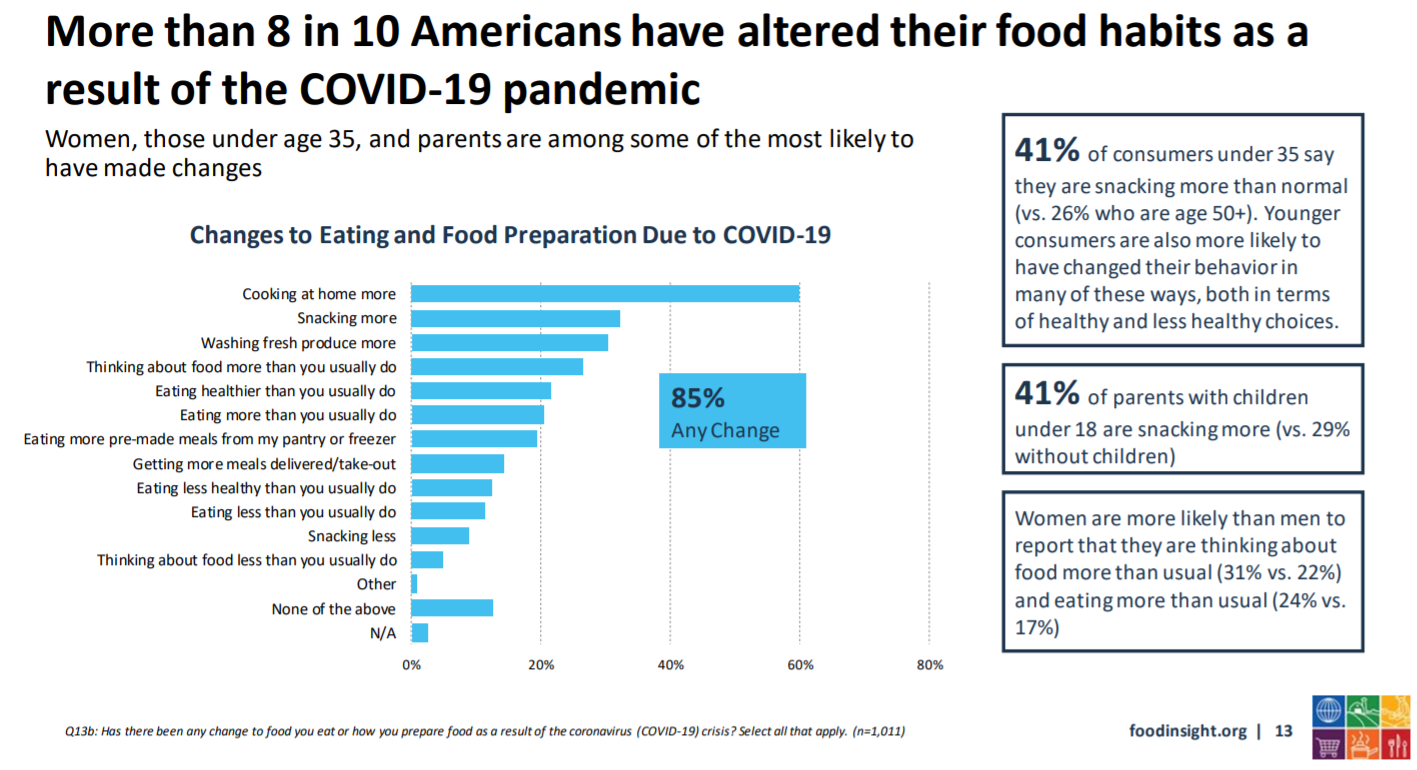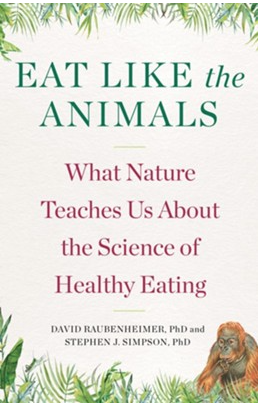Food (well, beverage) thought for the weekend


I know this is a burning question:
Has coronavirus changed how much alcohol Americans are drinking? New research looks at what impact stay-at-home orders and conditions during the COVID-19 crisis have had on American alcohol consumption.
The survey, which included 1,000 American adults and was carried out by APCO Insight, showed 35% of Americans are drinking about the same despite stay-at-home orders and 28% are drinking less. This includes 11% who say they have stopped drinking entirely.
Not being able to go out and bars and restaurants being closed are the top two reasons for drinking less, with 38% and 33% of respondents citing these factors respectively.
This last is bad news for the alcohol industry, which expects beverage alcohol to take five years to rebound from the coronavirus.
Total global alcohol consumption, boosted by increases in beer and RTD [ready to drink] products, grew by +0.1% in volume and +3.6% in value in 2019. But the near complete shutdown of bars and restaurants across the world for several months this year has set the category back dramatically. While there has been an uptick in liquor retail and ecommerce, this has not been enough to offset the losses in the on-trade….this will lead to double-digit declines in 2020, which will take until 2024 to recover to 2019 pre-Covid-19 levels. In the US and UK, this is likely to take even longer.
Will there be fewer auto accidents, less domestic violence, and reductions in other alcohol-related problems? The data should be coming in soon.
Addition, June 21
Several readers wrote to complain that I did not give enough information about these articles. In particular, David Jernigan, a professor at Boston University’s School of Public Health, said there is a lot as yet unknown about alcohol consumption right now,
But the source I would not go to is responsibility.org – they are a wholly owned unit of the Distilled Spirits Council of the Untied States (DISCUS), one of the leading alcohol industry trade groups…from the coverage of it in your blog and the link to the story on it in BeverageDaily.com, there are some obvious problems with their findings:
First, it looks like they asked people “do you drink responsibly?” as opposed to objective measures. There are much better ways to measure drinking behavior and I would not expect reliable findings from such a vague question.
Second, even their survey finds that prevalence of drinking has increased – up from 71% in the past month last year to 79% in the past month in the same period this year.
Finally, the article on this in BeverageDaily.com, to the author’s credit, asks and reports on how the survey figures match up with sales figures. The answer is they don’t. Off-premise sales are generally about 75% of sales volume. IRI reports that retail alcohol sales in the US “remain elevated” through 13 May, when they were up 34.2% compared to the same period last year. Only frozen foods have performed comparably. Nielsen figures say the same thing – total alcohol sales up 16% during the overall lockdown period compared with 2019. Spirits has been the biggest winner (up 27.4%), which suggests that people are maximizing purchases for alcohol content.
On-premise sales per outlet are down 68%. If you do the math between the two sectors, this adds up to about an 8.5% increase in sales overall. Add to this that people are most likely buying more for cheaper (more 24-packs of beer and boxed wine, according to Nielsen, in addition to spirits, the category with the highest alcohol content, seeing the largest sustained increase), and it starts to give a more accurate picture than DISCUS’s survey.
We won’t know for sure what has happened until the more accurate public health surveys come back from the field. However, as of early April, 18 of 22 police departments asked by NBC News about domestic violence calls indicated they were up substantially – a canary in the coal mine?
I am grateful to professor Jernigan for taking the trouble to write and even more for providing this information. The alcohol industry has a long history of manipulating research in its own interests. It’s always good to remember that this industry’s purpose is to sell as much booze as possible to as many people as it can, while public health efforts are aimed precisely at the opposite.
Populations with the lowest overall intake of alcohol on a population basis, are those that also have low levels of alcohol-induced social problems: car and other accidents, domestic and other violence, and problems with work, intimacy, and mental and physical health.
The Dietary Guidelines Advisory Committee (DGAC) meets today to talk about its draft report. Register for it here.
The agenda is here.
Reporters tell me that the DGAC report will not be released at this meeting; it is not ready.
Here’s what today’s announcement says:
The Committee will finalize their advisory report based on Committee discussion at the meeting. They will then submit their final report to the Secretaries of USDA and HHS. USDA and HHS will post the final report online, send out a public notification, and open a new public comment period for the Departments to accept comments on the Committee’s report. This action is expected on or around July 15, 2020.
This meeting is being held despite calls for delay. Politico’s Helena Bottemillier Evich describes these calls under “Influential groups press for delay of Dietary Guidelines” (behind a paywall at the moment).
The groups are turning up the pressure ahead of the committee’s final public meeting on Wednesday, where the panel will discuss its draft conclusion statements. The committee is then expected to release in mid-July a sweeping scientific report to advise the Agriculture Department and Department of Health and Human Services on what the 2020 iteration of the guidelines should say.
Some of the Dietary Guidelines’ staunchest allies and fiercest critics — including professional groups and low-carb advocates — are urging a delay. They note that last year’s government shutdown and the continuing pandemic have made it more difficult for the committee to complete the necessary work before advising the government on the 2020 guidelines, which will last five years.
Corporate Accountability notes the undue influence of industry on the guidelines. One of its recent reports documents ties of DGAC members to ILSI, an industry front group.
The guidelines are subject to criticism from just about everyone (me too). I’m interested to see what this committee does. Stay tuned.
The industry-sponsored International Food Information Council (IFIC) regularly conducts surveys of consumer food buying habits.
Its latest survey was conducted in mid-April. According to the press release, the “COVID-19 Pandemic Transforms the Way We Shop, Eat and
Think About Food.”
COVID-19 has also upended almost every aspect of our daily lives, not the least of which includes our eating and food-purchasing habits. Among the 85% who have made any change, the biggest—far and away—is that 60% of Americans report cooking at home more. Respondents also say they are snacking more (32%), washing fresh produce more often (30%) and thinking about food more than usual (27%).
The survey’s chief finding:

No surprises here or in any of the other findings, but it’s nice to have the data.
On Mondays, I like to start the week by highlighting ways that food companies are exploiting Covid-19 for marketing purposes. But here’s Tejal Rao in the New York Times on exploitation of Black Lives Matter: “Food Brands Tweet #BlackLivesMatter, but What’s Behind the Words?”
She collected a group of examples on Twitter, from which she concludes:

As she explains, “All brand statements require some suspension of disbelief from the viewer, but particularly when they’re issued by fast-food companies during the coronavirus pandemic.”
My thought: If food companies really want to promote black lives, they can start with recruiting more employees of color, paying them higher wages, offering better sick leave and health care benefits, and supporting them with child care, education, training, and opportunities for career advancement.
Corporations did this for their employees at one time. They can do it again.
David Raubenheimer and Stephen J. Simpson. Eat Like the Animals: What Nature Teaches Us About the Science of Healthy Eating. Houghton Mifflin Harcourt, 2020.

I did a blurb for this book:
Eat Like the Animals is a must-read. This beautifully written book proposes a highly original and compelling explanation for why so many of us gain weight in today’s overprocessed food environment. Raubenheimer and Simpson are biologists who use their deep knowledge of animal and insect physiology, evolution, and feeding behavior to construct a compelling hypothesis: we share with animals an innate appetite for protein that regulates what we eat.
Here is one sample:
Our analyses, inspired all those years ago by experiments with locusts and then extended to primates in the wild, had provided a radical new insight into the obesity epidemic. Ultraprocessed foods make us fat not because we have such strong appetites for the fats and carbs they contain, as is often thought to be the case. Rather, we become overweight because our appetite for protein is stronger than our ability to limit fat and carb intake. So, when protein is diluted by fats and carbs, as it is in ultraprocessed foods, our appetite for it overwhelms the mechanisms that normally would tell us to stop eating fats and carbs. As a result, we eat more than we should, more than is good for us.” (p. 144)
And here is another:
That realization provided one of the key insights of this book and one that has guided us ever since: the strong appetite for protein shared by all animals can lead us to eat too much or too little of other nutrients, including fats and carbs. If our protein appetite is not satisfied, we will overeat the other two. Once we get enough protein, our appetites cease driving us to eat more. That’s as simple as we can make nutrition—without oversimplifying it. (P. 180)
U.S. Secretary of Agriculture Sonny Perdue announced today that the U.S. Department of Agriculture’s (USDA) Farmers to Families Food Box Program has distributed more than five million food boxes in support of American farmers and families affected by the COVID-19 pandemic.
In case you have any doubts, the USDA has a video of the program in action: USDA Farmers Feed Families Food Box Program video
Or, you can listen to the USDA’s podcast interviews. Have a Listen.
Not everyone thinks the program is going swimmingly.
Although some areas have reported positive experiences, we are concerned that the Food Box program has a number of gaps that will affect its ability to provide food to families in an efficient and equitable way,” said Senate Democrats in a letter to Perdue on Friday. Their letter followed a May 22 letter by the Democratic leaders of three House Agriculture subcommittees who said contracts “were awarded to entities with little to no experience in agriculture or food distribution and with little capacity to meet the obligations of their award.
The program got off to a bad start, but may yet end up doing some good.
But really, these resources ought to be going into SNAP, which already works and could work much better if given adequate resources.

I am honoring this initiative which comes from a group in Ann Arbor. The information link is here.
The American Association for the Advancement of Science, publisher of Science, is promoting the #ShutDownSTEM website with resources for planning participation.